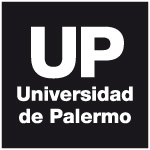University of Palermo (Buenos Aires)
| Universidad de Palermo | |
 |
|
| Type | Private |
|---|---|
| Established | 1986 |
| Rector | Ricardo H. Popovsky |
| Location |
Buenos Aires, Argentina 34°35′51″S 58°24′57″W / 34.597447°S 58.415969°WCoordinates: 34°35′51″S 58°24′57″W / 34.597447°S 58.415969°W |
| Campus | Urban |
| Colors | |
| Website | http://www.palermo.edu |
The University of Palermo (Spanish: Universidad de Palermo) is a leading private university located in Buenos Aires, Argentina. It has several buildings located in different parts of the city. The university offers several educational programs. It has ties with the universities of Yale, Harvard and NYU among others.
In 1986 a group of academics and intellectuals established the Fundación Universidad de Palermo (University of Palermo Foundation), with the idea of creating a university with the same name.
It's Engineering Research and Development department works with Renewable Energy sources, ranging from wind energy to harvesting from piezoelectric materials. Each year, the department holds a "Feria de ciencias" (Science Fair) which goal is to potentiate the projects of high school students.
The University of Palermo maintains ties with renowned international universities. Among the institutions that hold agreements with the university are: Yale, Harvard, NYU, University of Paris III: Sorbonne Nouvelle and the Monterrey Institute of Technology and Higher Education). Besides, the University of Palermo is host to one of the UNESCO chairs, is a member of the ISEP, and a member of AACSB, and its Architecture career has been accredited by the Royal Institute of British Architects.
Academic agreements range from the exchange or visit by professors and alumni to joint research projects.
As a leading university, the Universidad de Palermo has been recognized by the following rankings:
The university of palermo offers doctoral, masters and undergraduate degrees. Programs are held within it six schools.
The University of Palermo's library has with more than 45,000 volumes including audio-visual and printed material. The collection can be searched through the Internet. Its director is Roberto Cagnolli
...
Wikipedia
